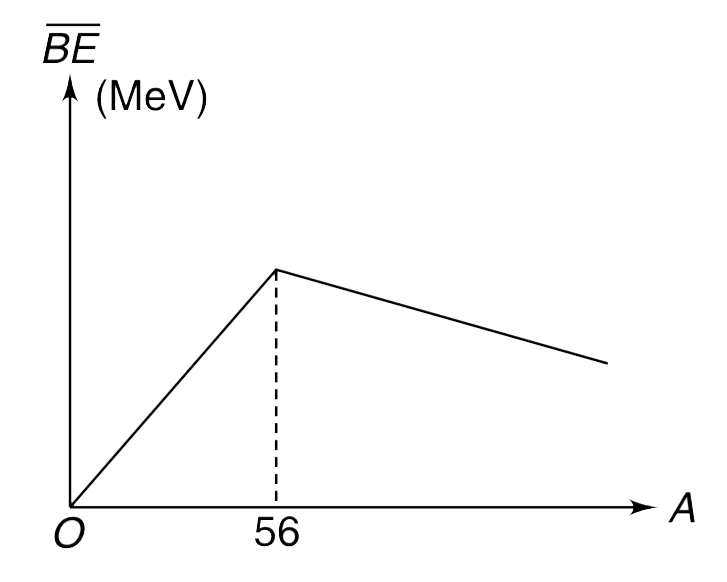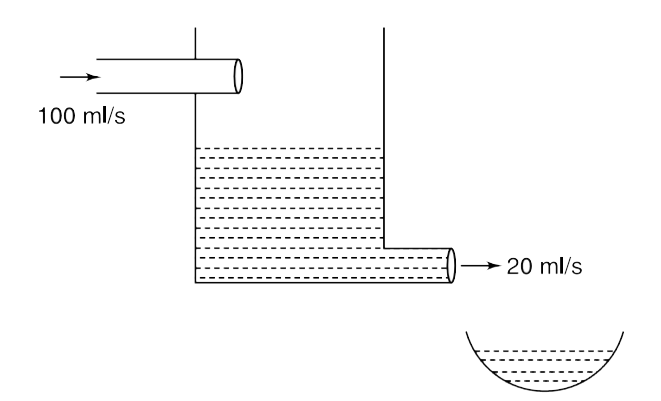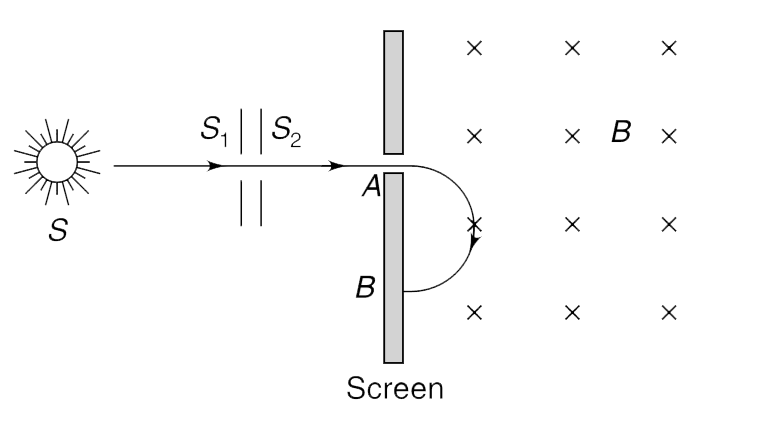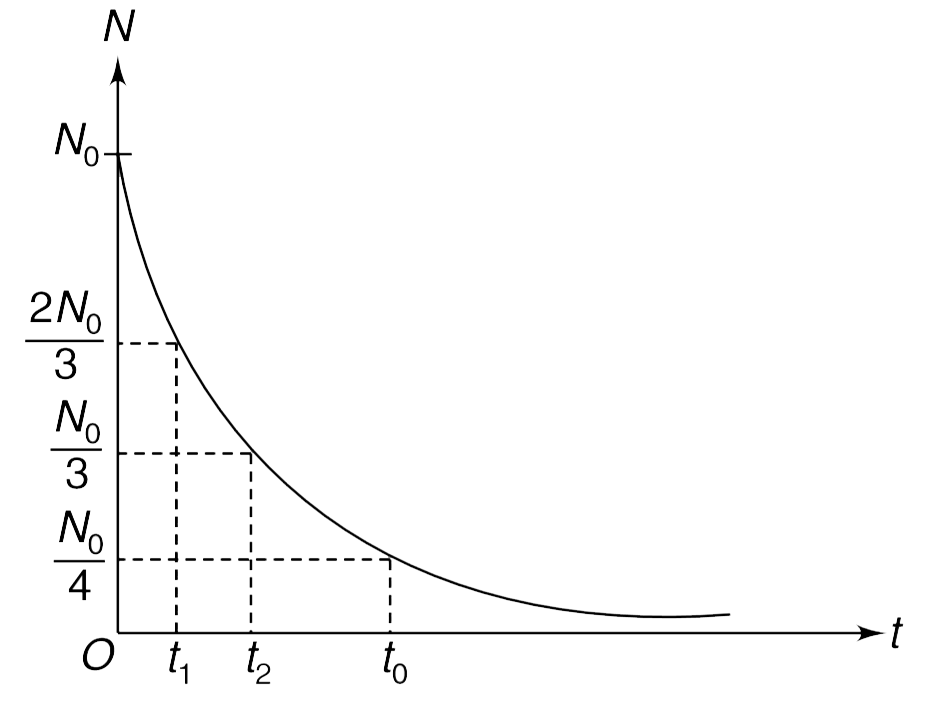All Questions from ARIHANT PHYSICS Chapter 9 NUCLEAR PHYSICS for Class 12
| Class 12 | PHYSICS |
| Chapter | NUCLEAR PHYSICS |
| ARIHANT PHYSICS | All Questions |
| Medium | English |
| Academic Year | 2023-2024 |
Question 3
A radionuclide has a half life of 10 s. Which of the following statements are correct? (a) In a sample, probability that a nucleus will decay in next 10 s is 0.5. (b) In a sample, the probability that a nucleus which has survived first 10 s, will decay in next 10 s is 0.5. (c) The probability that a nucleus which has survived first 10 s, will decay in next 10 s is 0.25. (d) If a sample of radionuclide has 4 nuclei, two nuclei will decay in next 10 s.View SolutionQuestion 5
(a) Assume that a particular nucleus, in a radioactive sample, has a probability ρ of decaying in the interval t to t+Δt. Taking that the nucleus actually does not decay in the above interval, what is probability that it will decay in the interval t +Δt to t+2Δt?
(b) Find the mean life of .55C0 is its activity is known to decreases 4% per hour. ln(2524)=0.04.View SolutionQuestion 7
An alpha active element has molar mass M and has a half life of τ. A large plate of thickness α is made from the radioactive element. Density of the plate is ρ. Calculate the number of alpha particles emitted in unit time from unit surface area of the plate. Avogadro’s number is NA. View SolutionQuestion 10
The α-decay of nucleus X230 is accompanied by emission of two groups of α−particles-one group having α−particles of kinetic energy 6.7MeV and other having α-particles of kinetic energy 5.2 MeV. Following the emission of these particles the daugheter muclei are found in ground and exiceted states. find the energy of gamma photon. that is subsequenctly emitted by de-exictation of the excited daughter nuclei. Assume that nuclei of X230 are at rest. View SolutionQuestion 11
In a nuclear reactor, the neutrons produced in fission reaction have high kinetic energy of the order of few MeV. Whereas the U235 nucleus fissions only iwht a slow neutron. In a reactor heavy water (D2O) is used to slow down the neutrons. A neutron hiting a deuterium nucleus slows down quickly. Calculate now many head on, elastic collisions must a neutron have with deuterium nuclei to reduce does not lose energy by any other way apart from collisions with deuterium.
[Take log102=0.301 and log103=0.477]View SolutionQuestion 13
Beryllium necleus (.94Be) when bombarded b alpha particle undergoes a nuclear reaction producing .126C. Binding energy per nucleon for different species are as under.
BEBe:6.4763MeV,BEHe:7.0819MeV,
BEC:7.6885MeV
(a) Is there any other product (X) taht is formed apart from ^(17)C?
(b) Calculate the energy relased in the reaction. Why don't we required Binding energy of X in this calculation?View SolutionQuestion 14
A sample contains two isotopes -one stale and the other unstable. Number of stable nuclei is equal to Ns and number of unstable nuclei is equal to Nu. After a time the activity of the sample decreased to one thrid of the, the initial activity while the total number of nuclei (excluding decayed nuclei) became half. find the initial value of the ratio Ns/Nu. View SolutionQuestion 18
Consider the position emission reaction
.AzX→Az−1Y++.01e+v
Atomic mass of X and Y are mx and my respectively and mass of a position is me
(a) Write the disintegration energy (Q) of the reaction.
(b) If .AzX is .116C and atomic mass of 11C is 11.011434 u, atomic mass of 11B is 11.009305 u, mass of positron is me=0.000549u, then find the maximum kinetic energy of emitted positron. [(1u)c2=930MeV]View SolutionQuestion 19
Tritium (.31H) is a radioactive isotope of hydrogen. It has a half life of about 12 years. It is produced in the upper atmosphere and is brought to the earth by rain. This mechanism replensihes the Tritium in water on the Earth. Estimicate the ageof a bottle of wine whose .31H radiation is about (15)th of that of a new bottle. [log102=0.303].View SolutionQuestion 20
In the thorium decay series that begins with .232Th,.228Th alpha-decays into .224Ra with a half life of 1.9yr. .224Ra alpha-decays into .230Rn with a half life of 3.7d, which in turn decays into .216Po with a half life of 55s. If the nuclides are in radioactive equilibrium in a mineral sample that contains 1.0g of .220Rn, what are the masses of .224Ra abd ,228Th in the sample?View SolutionQuestion 23
It is known that the ratio of .14C to .12C atoms in living beings and atmosphere is a constant. In one experiment it was found that the radiocarbon activity of a living thing is 16 disintegration per minute per gram of carbon content. Find the ratio of .14C to .12C atoms in your body. Half life of beta decay of .14C is 5760yr=0.03×109 minute. View SolutionQuestion 26
The ratio (by weight) for U238 in a rock sample is 4:3. Assume that originally the rock had only U238 and the entire Pb226 is product of decay of U238. The intermediate radioactive nuclides in the chain are very small in quantity in the rock.
Find the age of the rock if half life of U238 is 4.5×109 year.
[log101.79=0.25,log102=0.3]View SolutionQuestion 28
A radioactive substance has a half life of t0. Two particular nuclei-let's name them as nucleus A and B-have not decayed over a particular observation period of 6t0.
(a) What is the probability that A will decay over a further period of 3t0?
(b) What is the probability that both A and B will survive over a further period of 3t0?View SolutionQuestion 31
.15P32 is beta active and has a short half life of 14 days. The .16S12 nucleus produced is in ground state. On and average the emitted beta particles have 50% of the energy released in the reaction, remaining energy being carried by antineutrino. A liquid has small amount amount of P in it and it was found taht the liquid was receiving heat at a rate of about found that the liquid was receiving heat at a rate of about 10mW due to decay of P32. It is to be noted that antineutrino do not intereact with matter easily and it would be safe to assume that they escape out of the contaienr. Estimate the number of P32 atom in the liquid. Relavent masses are
P32:31.9740uS32:31.9720ue:0.0005u
1day=86400s1u=931MeVc2View SolutionQuestion 32
A free neutron at rest, decays into three particles: a proton, an electron and an anti neutrino.
.10n→.11P+.0−1e+→v
The rest masses are: mn=939.5656MeV/c2
mp=938.2723MeV/C2me=0.5109MeV/c2
In a particular decay, the antineutrino was found to have a total energy (including rest mass energy) of 0.0004 MeV and the momentum of proton was found to be equal to the momentum of electron. Find the kinetic energy of the electron. View SolutionQuestion 33
A radioactive nucleus A decay to C after emitting two α and three β particles. Another nucleus B decays to C by emitting one α and five β particles. Half life of A and B are 1 hr and 2hr respectively and all intermediates have negligible half lives. AT time t=0, population of C is zero.
(a) Find the difference in atomic numbers and mass numbers of A and B.
(b) Find the population of C when both A and B have equal population.
(c) Find time t0 when both A and B have equal rate of decay. View SolutionQuestion 35
A radioactive sample consists of two isotopes one of then decays by α− emission with a half life of τ1=405s and the other one decays by β emission with half life of τ1=1620s.Attimet=0,probabilitiesof≥∈galphaandbetapartic≤somthesamp≤areequal.<br>(a)Ifapartic≤comingoutofthesamp≤isdetectedatt=1620s,wˆistheprobabilitytˆitisalphapartic≤?<br>(b)F∈dthetimewhen→talνmberofsurviv∈gνc≤iishalfthe∈itialquantity.<br>GivenIfx^(4)+4x-2.5=0thenx=0.59<br>"log"_(10)2=0.301, "log"_(10)5.9=0.774View SolutionQuestion 36
A deuterium nucleus at rest absorbs a Gamma ray photon of energy 2.21 MeV and splits into a proton and a neutron. The neutron was found to be at rest after the disintegration. Calculate the mass of proton if it is known that mass of deuterium and hydrogen atom is 2.014740u and 1.008145u respectively. [1u=931MeV/c2]View SolutionQuestion 37
Two isotopes of radioactive Radon gas −R222n and R220n are mixed in atomic ratio 1000:1 and kept in a 831cm3 container at 105N/m2 pressure and 27∘C temperature the two isotopes have half life of 4 days and 1 minute respectively. Calculate the activity of Radon gas sample in unit of curie. View SolutionQuestion 38
The Uranium -238 decay series (also known as 4n+2 series. Can you tell why?) ends at a stable isotope .82Pb206. Lead -206 is found in a certain Uranium ore due to dissintegration of Uranium.
(a) How many alpha and beta particles are emitted in the series decay of one .92U238 nucleus into .82Pb206?
(b) what is the age of uranium ore if it now contains 8g of Pb206 for every 10g of U238? Hlaf life of U238 is 4.5 bilion year.
[Take ln2=0.6930,ln(1.9243)=0.6546]View SolutionQuestion 39
The half lives of two longest-lived radioactive isotopes of phosphorus P32 and P33, are 14 days and 28 days respectively. A sample has been prepared by mxing the two isotopes in the ratio of 4:1 of their atoms. Initial activity of the mixed sample is 9.0mCi. Find the activity of the sample after 80 days.
Take ln2=0.7 and e−2=0.14View SolutionQuestion 40
A diatomic molecule moving at a speed u absorbs a photon of wavelenght λ and then dissociates into two identical atoms. One of the atoms is found to be moving with a speed v in a direction perpendicualr to the initial direction of motion of the molecule. Take mass of the molecule to be M and calculate the binding energy of the molecule. Assume that momentum of absorbed photon is negligible compared to that of the molecule. View SolutionQuestion 41
A.147N nucleus, when bombarded by .42He, converts into .178O accoring to the following reaction.
.147N+.42He→.178O+.11H
Atomic masses are:
.14N:14.003u,.4He:4.003u,.17O:16.999u,.1H:1.008u
(a) Find the Q value of the reactions
(b) Assume that a .4He nucleus collides with a free .14N nucleus originally at rest. Calculate the minimum kinetic energy (k0) that .4He must have so as to cause this reaction.
(c) If the .17O nucleus has an excitation energy of 1.0 MeV, find the minimum kinetic energy (k0) that .4He must have.
[Take 1u=930MeV/c2]View SolutionQuestion 42
Following reactions are known as inverse beta decay
p+→v→n+e+
n+v→p+e−
These reactions have extremely low probabilities. Because of this, neutrinos and antineutrinos are able to pass through vast amount of matter without any interaction. In an experiment to detect neutrinos, large number of neutrinos coming out from beta decays of a radioactive material were made to pass through a tank of water, containing a cadmium compound in solution, which provided the protons to interact with antineutrinos, which provided the protons to interact with antineutrinos. Immediately after a proton absorbed a neutrino to yield a positron and a neutron, the positron encountered an electron and both got annihilated. the gamma ray detectors surrounding the tanks responded to the resulting photons. This confirmed that the above reaction has taken place.
(a) How many gamma ray photons are produced when a electron annihilates with a positron? What is energy of each photon? Take the mass of an electron to be 0.00055 u.
(b) The neutron produced in the above reaction was captured by .112Cd to form .113Cd. The atomic masses of these two isotopes of cadmium are are 111.9028u and 112.9044u respectively. mass of a neutron is 1.0087u. find the Q value of this reaction. Assume half of this energy is excitation energ of .113Cd. if the nucleus de-excites by emitting a gamma ray photon find its wavelenght. View SolutionQuestion 43
Consider the β− decay of .2712Mg
.2712Mg→.2713Al⋅+.0−1e+→v
The atomic masses of Mg27 and Al27 are 26.98434u and 26.98154u respectively. Mass of electron is 0.00055u. The Al+ nucleus has excitively. Mass of electron is 1.015MeV.
(a) Find the Q value of the β− decay.
(b) What is maximum possible kinetic energy of emitted β− particle?
(c) Find the smallest wavelenght photon that Al+ can emit when it de-excites.
(d) As an alternative to gamma decay, the excited Al+ nucleus returns to its ground state by giving up its excitation energy to an atomic electron which has a binding energy of 2300eV. The process is known as internal conservation. Find the kinetic energy of the emitted electron. View SolutionQuestion 44
Moderator is used in a nuclear to slow down fast neutrons generated after a fission event in the reactor consider a fast neutron (mass mn) moving at speed v. The neutron hits a moderator nucleus (Mass M), which is originally static, and gets scattered elastically by 180∘
(a) Find te rato of kinetic energy of the neutron after and before collision.
(b) Show that when M>>mn, neutron does not lose much energy and therefore, a moderator should have a small mass number. View SolutionQuestion 45
Two radioactive elements A and B are present in a mixture. Both are beta active. Half lives of A and B are 30 minute and 60 minute respectively. The initial activity of the sample hour only 30 beta particles were detected in an interval of 2 second. Assume that law of radioactivity decay is obeyed.
(a) Find the ratio of number of active of A to that of B in the mixture initially.
(b) The molar mass of both A and B is closed to 200g. The mixture contains other substance (non radioactive) aprt from A and B. what fraction of the entire mixure is radioactive (fraction by weight) if it is given what mass of the mixture is 1μg. View SolutionQuestion 46
The graph of binding energy per nucleon (¯¯¯BE) versus mass number (A) for various nuclei has been approximated as made up of two linear components as shown in figure. The slope of line for 0<A<56 is 0.16 and slope of line for A56 is -0.012. the binding energy of .42He nucleus is 11 times the value predicted by the shown graph due to its very stable structure. Estimate the minimum mass number (A) of a nucleus for it to exhibit alpha decay.
 View Solution
View SolutionQuestion 47
A rock sample has radioactive isotope A that decays into a stable product B. half life of A is 103 year. It was found that the rock sample contained n1 moles of A and n14 moles of b. Plot the variation of population of B with time. After how much time the rock will have equal population of A and B? [Given 2.0.68=1.6] View SolutionQuestion 48
A 100 ml solution of a radioactive material has activity A0. The solution is kept in a container and is diluted by adding water at a constant role of 100ml/sec. From a small hole in the container 20ml/sec of solution is taken out simultaneously. find the activity of the 100ml solution that is taken out in 5sec. Assume that the half life of radioactive material is very large and that the solution alwyas remains homogeneous.
 View Solution
View SolutionQuestion 49
A source (s) of beta particles contains a radioactive isotope X. The emitted beta particles are passed through two parallel slits s1 and s2 to get a narrow parallel beam. This beam is made to enter a uniform magnetic field (B). The particles follow semicircular trajectories and are found to hit the screen at all points from A to B the distance AB is equal to 2a. The reaction for decay of a nucleus of X is
X→Y+.0−1e+→v
Calculate the minimum difference in mass of a nucleus of X and Y. mass of an electron is m and charge on it its e.
 View Solution
View SolutionQuestion 52
The power radiated by a star and its mass ma are related by PP0=(mM0)7/2 where P0 and M0 are power radiated by the Sun and mass of the Sun respectively. Assume that the fraction of mass lost by the star since its birth is α(<<1). Calculate the age of the star in terms of α,M0P and P0. View SolutionQuestion 53
Rate of evaporation (volume evaporated per unit time) of water kept in an earthen pot is proportional to the volume of water present in the pot. It is observed that it takes 48 hrs for 75% of the water kept in the pot to evaporate. The empty pot was placed below a tap from which water leaks in small drops each of volume v0. The drops fall at a uniform rate of n drops per hour. Calculate the volume of water in the pot 24hrs after it was kept below the tap. View SolutionQuestion 54
A radioactive nucleus A decays into B with a decay constnat λ1. B is alos radioactive and it decays into C with a decay constant of λ2. At time t=0 activity of A was recorded as A01 and that of B was A02=0 , in a sample.
(a) If N1 and N2 are population of nuclei of A and B respectively at time t, set up a differential equation in N2.
(b) The solution to the differential equation obtained in part(s) is given by
(b) The solution to the differential equation obtained in part (a) is given by
N2=λ1λ2−λ1N01(e−λ1l−e−λ2l)
Where N01 is initial population of A. Based on this answer following questions-
(i) If half life of A is quite large compared to B (for example hafl life of A is 8 hr and that of B is 1hr). show that ratio of activity of B to that of A approaches a constant value after a sufficiently long time. Find this ratio, in terms of λ1 and λ2.
(ii) If half of A is inifinitely large compared to that of B (for example, A has half life −109 yr and for B half life −105 yr), show that both A and B will have equal activity after a very long time.
(iii) If λ1>λ2 find the time at which activity of B reaches a maximum. View Solution

